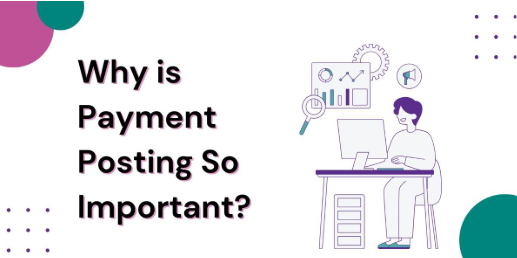Picture this: It’s Friday afternoon, and you’re reviewing your practice’s accounts receivable. That $15,000 claim you submitted three weeks ago is still sitting in limbo. Your staff spent hours on patient care, your overhead costs are mounting, and now you’re waiting on payments that should have arrived weeks ago.
Sound familiar?
If you’re a healthcare provider in 2025, you’re not alone in this frustration. The difference between a clean claim and a dirty claim isn’t just administrative jargon—it’s the invisible barrier standing between you and timely payments. One missing modifier, one transposed digit, or one outdated insurance ID can trigger a 30-day payment delay that ripples through your entire cash flow.
The stakes have never been higher. With healthcare costs rising and patient volumes fluctuating, every delayed payment puts additional strain on your practice’s financial health. But here’s the truth: most dirty claims are completely preventable.
What Is a Clean Claim vs Dirty Claim in 2025?
Understanding the fundamental difference between clean and dirty claims is crucial for any healthcare practice’s financial success.
A clean claim is a medical claim that contains all necessary information, follows current billing guidelines, and can be processed automatically by the payer without any additional information or corrections. Think of it as a perfectly completed form that glides through the system without hitting any roadblocks.
A dirty claim, on the other hand, is any claim that contains errors, missing information, or inconsistencies that prevent automatic processing. These claims get flagged, kicked back, or suspended, requiring manual review and correction before payment can be issued.
According to current CMS guidelines, clean claims must meet specific criteria including accurate patient demographics, valid provider information, appropriate coding, and proper authorization documentation. The 2025 billing standards have become even more stringent, with payers implementing sophisticated AI-powered claim review systems that catch errors human reviewers might have missed just a few years ago.
The financial impact is staggering. Industry data shows that dirty claims cost practices an average of $25 in additional administrative costs per claim, not including the opportunity cost of delayed payments and staff time spent on rework.
The Hidden Mistakes That Turn Clean Claims Dirty
Even the most experienced billing teams make mistakes that transform otherwise perfect claims into payment-delaying problems. Here are the most common culprits:
Patient Demographics Errors
A single typo in a patient’s date of birth can derail an entire claim. Insurance companies use sophisticated matching algorithms, and even a day-off discrepancy between your records and the payer’s database will trigger a rejection. Similarly, outdated insurance member IDs, incorrect policy numbers, or mismatched names (maiden vs. married names) create immediate red flags.
Coding Inconsistencies
The relationship between CPT codes and ICD-10 diagnosis codes must tell a coherent clinical story. For example, billing CPT code 99213 (office visit) with ICD-10 code Z00.00 (routine health examination) creates a logical disconnect that payers will question. The visit level doesn’t align with a routine exam, which typically requires preventive care codes.
Provider and Facility Information
NPI numbers must be current and match the rendering provider exactly. Using an incorrect or inactive NPI, even for a provider who recently joined your practice, will cause immediate rejection. Similarly, facility information must match exactly what’s on file with the payer.
Authorization and Referral Gaps
Many procedures require prior authorization, and failing to include authorization numbers or using expired authorizations will result in automatic denials. Even when authorization exists, the claim must reference it correctly and fall within the authorized date range.
Modifier Misuse
Modifiers provide crucial context for procedures, but using the wrong modifier or omitting a required one can change the entire meaning of a claim. For instance, billing bilateral procedures without the appropriate modifier (-50 or -LT/-RT) can result in payment for only one side of the procedure.
Real-World Impact: When Dirty Claims Hit Your Bottom Line
The consequences of dirty claims extend far beyond administrative inconvenience. They create a cascade of problems that affect every aspect of your practice:
Cash Flow Disruption: When claims are delayed by 30+ days, your practice essentially provides an interest-free loan to insurance companies. For a mid-sized practice processing $500,000 in monthly claims, even a 20% dirty claim rate means $100,000 in delayed revenue each month.
Increased Administrative Costs: Your billing staff spends an estimated 15-20 minutes per dirty claim on research, correction, and resubmission. With average healthcare administrative salaries, this translates to $8-12 in labor costs per corrected claim, not including the overhead costs of additional phone calls, research time, and documentation.
Patient Satisfaction Issues: Dirty claims often result in unexpected patient bills, balance billing issues, or delays in processing patient payments. When insurance doesn’t pay as expected, patients receive larger bills, leading to payment delays and potential collection issues.
Compliance Risks: Repeated billing errors can trigger payer audits or compliance reviews. In severe cases, patterns of billing errors can be interpreted as potential fraud indicators, even when the errors are purely administrative.
7 Essential Strategies to Prevent Dirty Claims
Preventing dirty claims requires a systematic approach that addresses common error sources before claims leave your practice:
- Implement Real-Time Eligibility Verification: Verify patient insurance coverage and benefits at the time of service, not just at scheduling. Insurance status can change monthly, and real-time verification catches coverage lapses, plan changes, and updated member ID numbers before they become claim problems.
- Establish Comprehensive Coding Review Processes: Create a two-person review system where one person assigns codes and another reviews the clinical documentation to ensure code selection aligns with the documented services. Focus particularly on ensuring ICD-10 codes support the medical necessity of CPT codes billed.
- Maintain Updated Provider and Facility Databases: Regularly audit your practice management system to ensure all NPI numbers, tax IDs, and facility information match exactly with payer databases. Set up quarterly reviews to catch changes in provider credentials or facility accreditations.
- Create Prior Authorization Tracking Systems: Develop workflows that automatically flag services requiring prior authorization during scheduling. Maintain a database of authorization numbers, approved date ranges, and approved service quantities to ensure claims stay within authorized parameters.
- Standardize Patient Information Collection: Train front desk staff to collect patient information consistently, including verification of spellings, dates of birth, and insurance card information. Implement double-entry verification for critical data fields like member IDs and dates of birth.
- Develop Denial Management Strategy Workflows: Create systematic processes for addressing denied claims, including root cause analysis to identify why claims became dirty. Use denial patterns to identify training needs or system improvements that prevent similar errors in the future.
- Invest in AI-Powered Claim Scrubbing Technology: Modern claim scrubbing tools use artificial intelligence to identify potential problems before claims are submitted. These systems can catch coding inconsistencies, missing modifiers, and demographic errors that human reviewers might miss.
Clean vs Dirty Claims: Real Coding Examples
Understanding how small errors create big problems becomes clearer with specific examples:
Clean Claim Example:
- Patient: 45-year-old male with Type 2 diabetes
- Service: Office visit for diabetes management
- CPT Code: 99214 (Office visit, established patient, moderate complexity)
- ICD-10 Code: E11.9 (Type 2 diabetes without complications)
- Result: Claim processes automatically, payment received within 14 days
Dirty Claim Example:
- Same patient and service
- CPT Code: 99214 (Office visit, established patient, moderate complexity)
- ICD-10 Code: E10.9 (Type 1 diabetes without complications)
- Error: Wrong diabetes type coded
- Result: Claim flagged for medical review, 30+ day delay while payer requests medical records to verify diagnosis
The only difference between these claims was one digit in the ICD-10 code, but that single character error transformed a clean claim into a dirty one, triggering medical review and significant payment delays.
The AI Revolution in Claims Processing
Healthcare billing is experiencing a technological transformation that’s changing how claims are processed and reviewed. AI-powered claim scrubbing tools can analyze claims in real-time, identifying potential problems before submission and dramatically reducing dirty claim rates.
These advanced systems go beyond simple edits to provide intelligent analysis of coding relationships, patient history patterns, and payer-specific requirements. They can identify when a modifier is missing, flag unusual code combinations that might trigger reviews, and even predict which claims are most likely to be denied based on historical data patterns.
Modern automation tools also integrate with electronic health records to verify that billed services align with documented care, reducing the risk of medical necessity denials. Some systems even provide real-time feedback during the coding process, alerting coders to potential problems before claims are finalized.
The investment in these technologies typically pays for itself within months through reduced claim rework, faster payments, and decreased administrative overhead.
Take Action: Audit Your Claims Process Today
Don’t wait for the next round of delayed payments to address dirty claims in your practice. The time to act is now, while you still have control over your revenue cycle.
Start with a comprehensive billing audit service to identify exactly where your claims process is breaking down. Look at your denial reports from the past 90 days and categorize the reasons for denials. Are you seeing patterns in demographic errors? Coding mistakes? Authorization issues?
Once you identify your specific problem areas, you can implement targeted solutions. Whether that means additional staff training, updated technology, or revised workflows, addressing dirty claims systematically will improve your practice’s financial health and reduce the daily frustration of delayed payments.
Remember, every dirty claim represents lost time, delayed revenue, and unnecessary stress for your team. But every clean claim moves you closer to predictable cash flow and sustainable practice growth.
Your patients depend on you for quality care, and you deserve to be paid promptly for the services you provide. Clean claims aren’t just about billing compliance—they’re about ensuring your practice has the financial stability to continue serving your community effectively.
The difference between clean and dirty claims might seem small, but in 2025’s competitive healthcare environment, those small differences determine which practices thrive and which ones struggle with cash flow challenges.
Make the commitment today to clean up your claims process. Your future self—and your bank account—will thank you.









